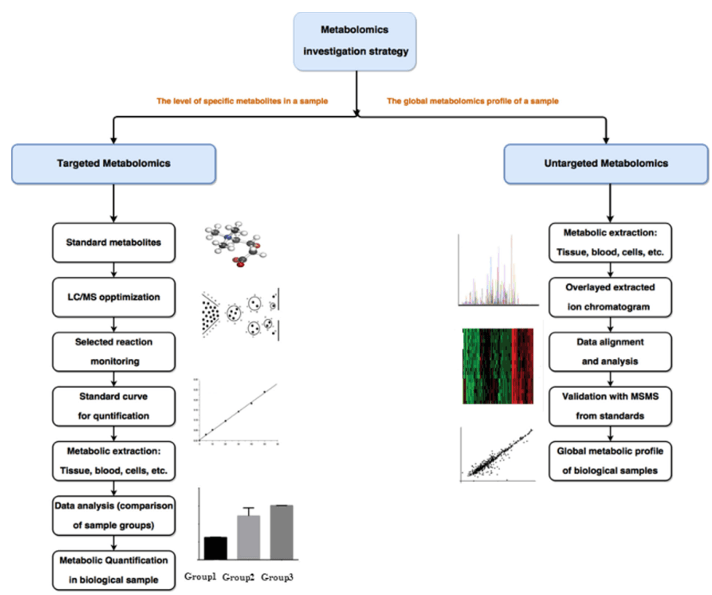Thiamine Metabolites and Derivatives Analysis
Submit Your InquiryWhat is Thiamine?
Thiamine, often known as vitamin B1, is a water-soluble B-complex vitamin. It is received through nutrition and plays an important function in cellular metabolism. Thiamine is largely engaged in carbohydrate energy conversion, acting as a cofactor for various enzymes in critical metabolic processes. It is required for the normal function of organs and tissues such as the brain and nervous system.
Thiamine Metabolites and Derivatives
Thiamine goes through a complicated metabolic process in the body. Thiamine is phosphorylated into its active form, thiamine diphosphate (TDP), in the intestines by the activity of thiamine pyrophosphokinase. TDP is a cofactor for various carbohydrate metabolism enzymes, including pyruvate dehydrogenase and -ketoglutarate dehydrogenase.
Thiamine monophosphate kinase is able to convert thiamine into thiamine monophosphate (TMP). TDP and other thiamine derivatives can only be made using TMP. Additionally, thiamine can be esterified to produce a variety of thiamine esters. Cellular signaling and energy metabolism are linked to thiamine triphosphate (TTP) and thiamine tetraphosphate (TTPP) esters.
Thiamine derivatives are substances that result from the modification or combination of thiamine molecules with other molecules. These derivatives may have different roles and qualities than thiamine itself. Thiamine pyrophosphate (TPP), commonly known as cocarboxylase, is a well-known thiamine derivative. TPP is a cofactor for various enzymes involved in energy metabolism, including pyruvate dehydrogenase and -ketoglutarate dehydrogenase complexes.
Thiamine Analysis Platform at Creative Proteomics
 Figure 1. The overall workflow of thiamine metabolism
Figure 1. The overall workflow of thiamine metabolism
At Creative Proteomics, we offer advanced and comprehensive analysis platforms for thiamine metabolites and derivatives.
The analysis poses several challenges due to their low concentrations in biological samples and the need to differentiate them from other compounds. Liquid chromatography-mass spectrometry (LC-MS) has emerged as a powerful analytical platform for the analysis of thiamine and its derivatives. LC-MS combines the separation capabilities of liquid chromatography with the detection and identification power of mass spectrometry, offering high sensitivity and selectivity.
For targeted analysis of thiamine metabolites and derivatives, we employ multiple reaction monitoring (MRM) mode in our LC-MS analysis. MRM allows for the specific detection and quantification of thiamine and its derivatives by monitoring precursor-to-product ion transitions. This mode offers enhanced sensitivity, selectivity, and reproducibility, ensuring reliable and accurate results.
We adhere to strict quality control measures and follow standardized protocols to ensure the accuracy and reliability of our analysis. Our dedicated quality assurance team monitors each step of the analysis process to guarantee the highest level of data integrity.
List of Partial Detectable Thiamine Metabolites and Its Derivatives
| Thiamine | Thiamine diphosphate (TDP) | Thiamine monophosphate (TMP) | Thiamine triphosphate (TTP) |
| Thiamine tetraphosphate (TTPP) | Thiamine pentaphosphate (TPPP) | Thiamine triphosphate-adenosine (TPP-Ad) | Adenosine thiamine triphosphate (ATP) |
| Adenosine thiamine triphosphate (ATP) | Thiamine disulfide (TDS) | Thiamine borate | Thiamine propyldisulfide |
| Thiamine propyl disulfide monophosphate |
Sample Requirements of Thiamine Analysis
| Sample Type | Sample Volume | Sample Matrix |
|---|---|---|
| Whole Blood | 100-500 μL | Anticoagulant: EDTA, heparin, or citrate |
| Plasma | 100-500 μL | Anticoagulant: EDTA, heparin, or citrate |
| Serum | 100-500 μL | Gel-separator tube |
| Urine | 100-500 μL | Midstream or random collection |
| Tissue Homogenate | 50-100 mg | Frozen or fresh tissue |
| Food Samples | Variable | Depends on the type and preparation |







